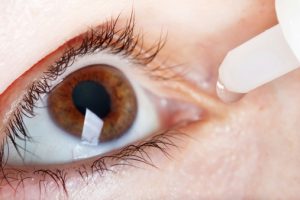
According to statics released by the American Eye Institute, about 3 million Americans get affected by dry eyes every year. It is a condition where the eyes do not produce an adequate supply of tears or the tears evaporate too quickly from the surface of the cornea. Because of the resultant dryness patients develop an “itchy” or painful sensation. The eyes can become over-sensitive to wind or light, or develop spontaneous pain typically associated with nerve injury. Left untreated, the risk of developing inflammation, ulcers or corneal scars is high.
“Traditionally, eye specialists have treated dry eye with artificial tears or topical medications for the surface of the cornea. While this kind of artificial eye-hydration does help improve some of the symptoms, the underlying ocular and non-ocular pain continue to remain a cause for concern.
According to Anat Galor, M.D., M.S.P.H., a cornea and uveitis specialist, an associate professor of clinical ophthalmology at Bascom Palmer Eye Institute, and the lead author of the study their study shows that some patients with dry eye have somatosensory pathway dysfunction in the cornea
Dr. Galor believes it would be better described as having neuropathic ocular pain.
Her thoughts on the subject are echoed by Roy C. Levitt, M.D., a neuroanesthesiologist, pain specialist, and geneticist also at the Miller School. He too feels dry eye patients would benefit from a multidisciplinary approach used for chronic pain treatment.
As part of the study the team evaluated 154 dry eye patients from the Miami Veterans Affairs Hospital. During the end of the study, the patients reported higher levels of non-ocular and ocular pain associated with multiple chronic pain syndromes.
The patients also showed lower scores on depression and quality-of-life indices. This was not surprising and in fact, it is consistent with a central sensitivity disorder. The researchers also believe that neuropathic ocular pain may share causal genetic factors with other overlapping chronic pain conditions.
According to Dr Galor, their goal in doing the study was to determine that dry eye patients have an overlapping or underlying chronic pain condition. The team believes that based on the results of their study, the diagnosis and pain management of dry eye patients call for a multidisciplinary approach.